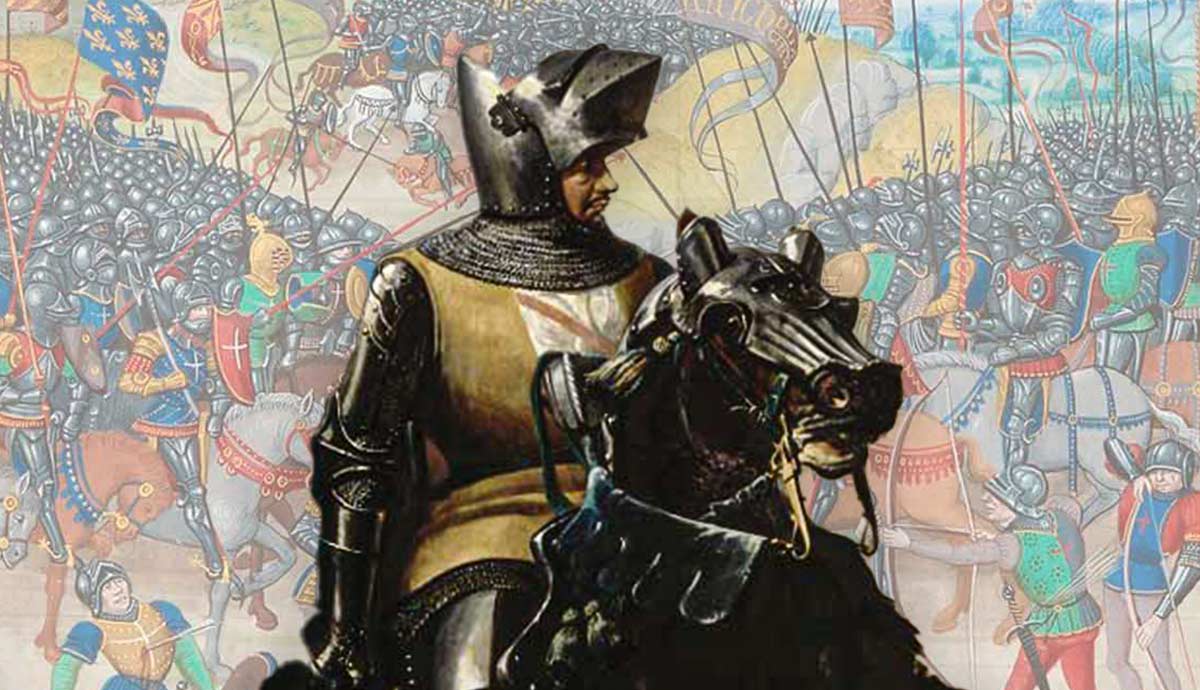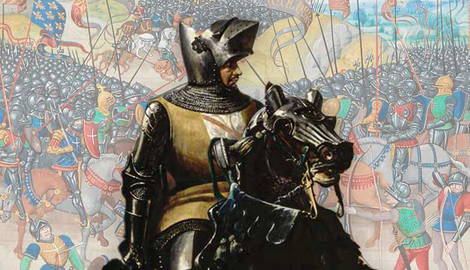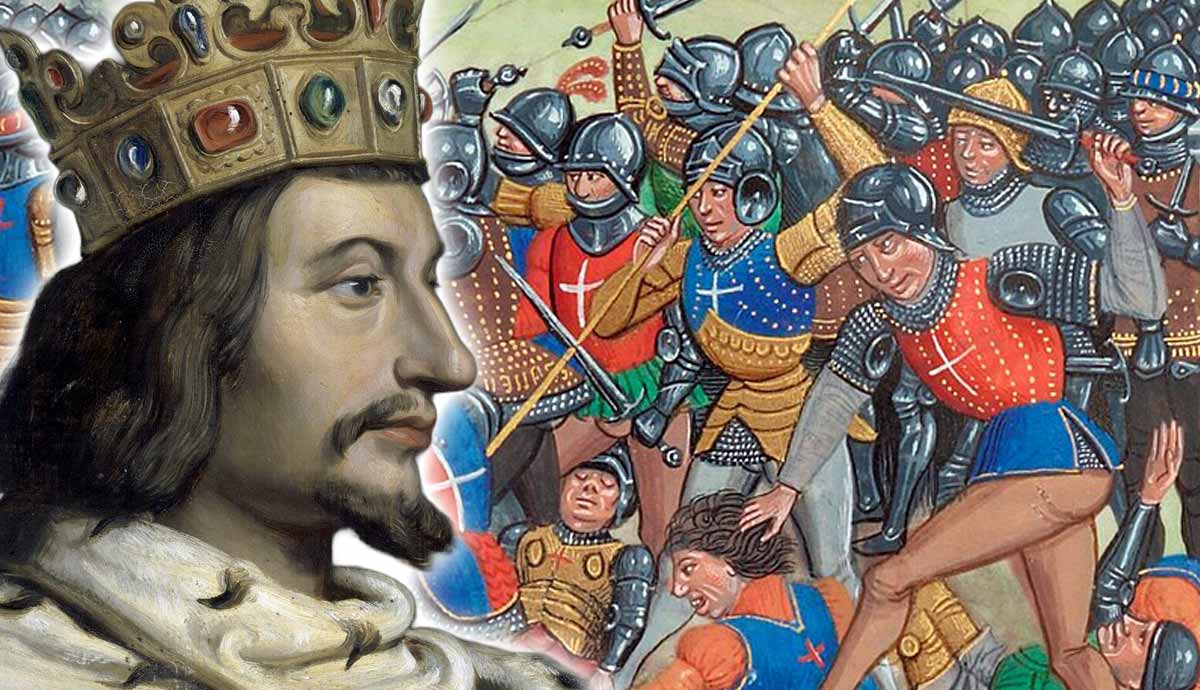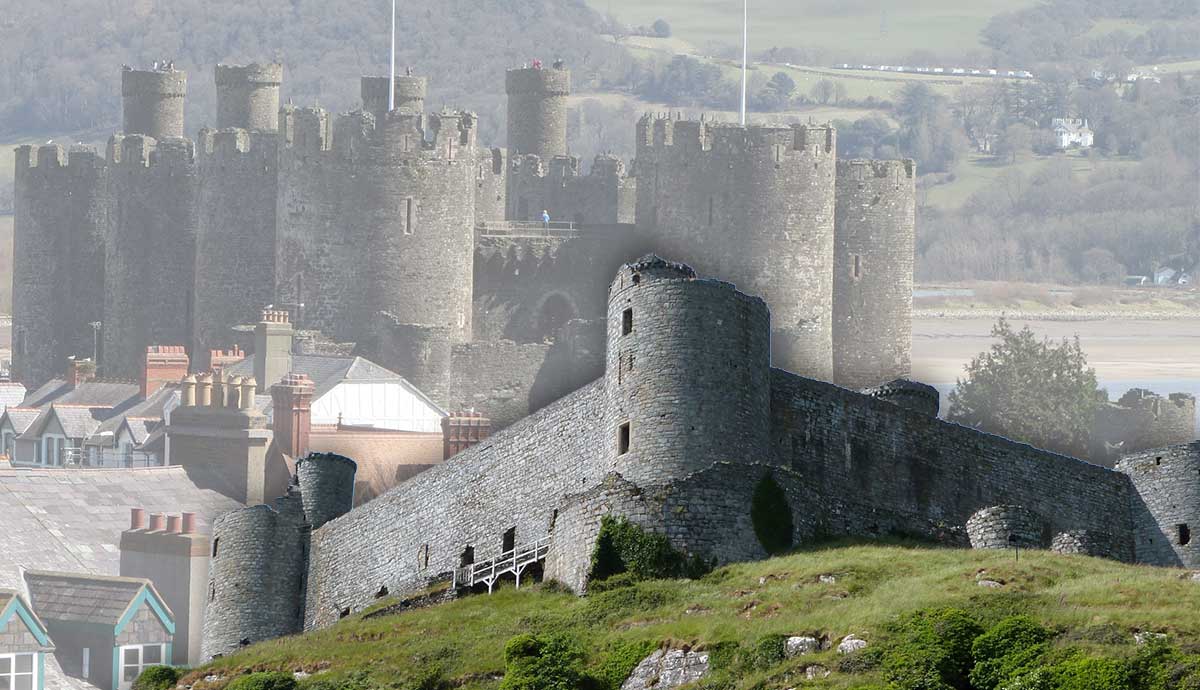
It goes without saying that medieval Europe produced some of the world’s most famous warriors, many of whom still hold their reputations today. Think Henry V, King of England who was victorious at Agincourt, or perhaps William Marshal, the legendary knight. But have you heard of the Eagle of Brittany before? Arguably a more important figure than his English counterpart, the Black Prince, the Eagle gained himself a fierce reputation throughout his military career in the Hundred Years’ War. Read on to find out all about him.
The Eagle of Britanny: His Early Life

The Eagle of Brittany—whose real name was Bertrand du Guesclin—was born in Broons, Brittany in northwest France, circa 1320. As with many medieval figures who were not immediate members of the royal family or monarchy, very little is known about du Guesclin’s early life.
His parents were Robert du Guesclin and Jeanne de Malmaines—and as a result, he was a member of the minor nobility, although he would go on to achieve greatness in his later years.
Early Military Career

Interestingly, du Guesclin’s first military engagement was not actually in the Hundred Years’ War—which he became so famed for in his later years—but was actually during the Breton War of Succession (1341-65).
Du Guesclin supported the Duke of Brittany, Charles of Blois-Châtillon, and his claim during the conflict. Charles was also known as “the Saint” during his military career, and it could certainly be suggested that Charles’s antics both on and off the battlefield helped to shape the young Bertrand du Guesclin into the man he would become in his later military career.
For example, Charles was supported by the French crown, while his rival claimant, Jean de Montfort (sometimes known as Jean IV of Brittany) was supported by the English crown. This was an early example of du Guesclin’s patriotism and something that would associate him with French national identity for years to come, making him a French hero following his death.
Knighthood and Rise

One of du Guesclin’s crowning moments came with his knighthood in 1354. This came while he was serving a Marshal of France, a man called Arnoul d’Audrehem, during the Hundred Years’ War.
In this particular instance, du Guesclin had successfully countered a raid by the English knight Hugh Calveley at the Castle of Montmuran in Brittany. This was the first major battle that du Guesclin had fought in, which made his knighthood even more impressive. And it is also worth noting that he would have only been in his early 30s at this point.
Following his knighthood, du Guesclin seemed to be on a never-ending increase in popularity and ability on the battlefield. From 1356-57, he successfully helped to defend Rennes against an English-Breton siege, led by Henry of Grosmont, the Duke of Lancaster. Grosmont was also a second cousin of the English king, Edward III, and a great-grandson of King Henry III of England (r. 1216-72).
It was during this siege that du Guesclin was challenged to a duel by an English knight named William Bamborough. Du Guesclin survived, and he managed to kill his English adversary.
Du Guesclin’s actions at Rennes helped to hugely improve French morale in the Hundred Years’ War, following their embarrassing defeat at the Battle of Poitiers in 1356, but aside from that, it also raised du Guesclin’s reputation even higher—eventually leading him to be noticed by the Dauphin of France, who would eventually go on to rule as King Charles V.
From Victory to Defeat: The Turbulence of 1364

Upon the death of his father, John II “the Good” of France, Charles V became king in 1364. And with his coronation, du Guesclin was employed into Charles’s service.
One of the new king’s first actions was to send du Guesclin to deal with Charles II of Navarre, who wished to take the Duchy of Burgundy. Charles V of France had other ideas and wished instead to give the Duchy of Burgundy to his brother, Philip.
On May 16, 1364, du Guesclin met an Anglo-Navarrese army under the command of Jean de Grailly at the Battle of Cocherel. It was during this battle that du Guesclin once again proved his military prowess against an equally strong—if not stronger—enemy force.
He successfully routed the enemy in just one day on the battlefield, and as a result, Charles II of Navarre was forced into signing a peace treaty with Charles V of France, and Philip was given Burgundy.
However, while du Guesclin’s military career had so far been a glimmering highlight during a dark period of French history, all of this was soon to change, just four months later at the Battle of Auray on September 29 of the very same year.
Charles of Blois’s army was subject to a heavy defeat by a combination of English forces and those of John IV, Duke of Brittany. Charles himself was actually killed in the battle, but after a bout of chivalric resistance, du Guesclin broke his weapons in a manner that signified his surrender. He was captured by the Breton and English forces and eventually ransomed back to King Charles V for 100,000 francs.
Castile Campaigns

It was not just France and the Hundred Years’ War that du Guesclin was involved with—he was also active in Castile, in modern-day Spain.
In 1366, du Guesclin persuaded the leaders of the so-called “Free Companies” (who were actually bands of mercenaries) to join him in an expedition to Castile to aid Count Henry of Trastámara against King Pedro I “the Cruel” of Castile.
This was a successful mission thanks to the assistance of the Free Companies and du Guesclin’s military prowess and tactics, and Henry was eventually crowned later the same year. Du Guesclin was rewarded by being named Henry’s successor as Count of Trástamara, and Henry also had him crowned as King of Granada, although the Kingdom of Granada was still under the control of the Nasrids at the time.
However, Pedro the Cruel was still to have his revenge—and this time he was successful. In 1367, under forces commanded by Edward the Black Prince, du Guesclin was captured again, and once more ransomed back to Charles V.
Pedro was later defeated by Henry and du Guesclin at the Battle of Montiel in 1369 and came to a gruesome end on March 23 of the same year when he was stabbed to death in Henry’s tent, aided by du Guesclin. Du Guesclin was naturally rewarded by Henry and was made Duke of Molina, and the Franco-Castilian alliance was formally sealed.
The Eagle of Brittany Becomes the Constable of France

The war with England (the Hundred Years’ War) had once again resumed in France, so in 1370 du Guesclin was recalled from Castile back to France by Charles V. Charles decided to make du Guesclin Constable of France, which was the highest military rank in France at the time.
What made this interesting was that this rank was generally reserved for members of the high nobility, sometimes even members of the French king’s immediate family, not a low-born noble such as Bertrand du Guesclin. Again, this showed how highly valued he was by the French nobility.
Du Guesclin’s first military involvement in his new role was at the Battle of Pontvallain on December 4, 1370, where he defeated the remnants of an English force. He also successfully recovered Poitou and Saintonge for the French Crown, the latter of which forced the Black Prince to leave France—demonstrating just how powerful du Guesclin’s reputation had become.
One of the most famous naval battles of the Hundred Years’ War, perhaps only shadowed by the Battle of Sluys in 1340, was the Battle of La Rochelle, which took place from June 22-23, 1372. This was a huge victory for the French and a stark contrast to their defeat at Sluys 32 years earlier. Over 400 English knights were captured, along with over 8,000 English soldiers, and this was one of the biggest turning points in the Hundred Years’ War in favor of the French.
The following year, on March 21, 1373, du Guesclin once again defeated an English force, this time at the Battle of Chiset.
Death and Legacy

For someone who led such an action-packed life, it probably comes as quite a surprise that du Guesclin lived until he was approximately 60 years old.
He eventually died of an illness at Châteauneuf-de-Randon while on a military campaign in the south of France. His death has been dated to July 13, 1380.
Because of his military reputation, and how he was deemed invaluable to King Charles V, he was buried in the Tomb of the Kings of France in Saint-Denis, Paris. Unfortunately, the Tomb was destroyed during the French Revolution, but du Guesclin’s heart was interred—and is kept to this day—at the Basilica of Saint-Sauveur in Dinan, Brittany.
As for his later legacy, being known as the Eagle of Brittany is no doubt a key factor in explaining his patriotic value and why he was—and still is—deemed as a symbol of French nationalism.
However, not all French people agreed with this. For instance, during the Second World War, the pro-Nazi Breton Nationalists deemed du Guesclin to be too pro-France and anti-Breton, so they destroyed a statue of him in Rennes. Similarly, in 1977, the Breton Liberation Front also destroyed a statue of him at Broons, where he was born.
Nevertheless, these are no more than instances of a noisy minority, and for the majority of French people today, Bertrand du Guesclin, the Eagle of Brittany, is regarded as one of France’s greatest-ever military heroes.









